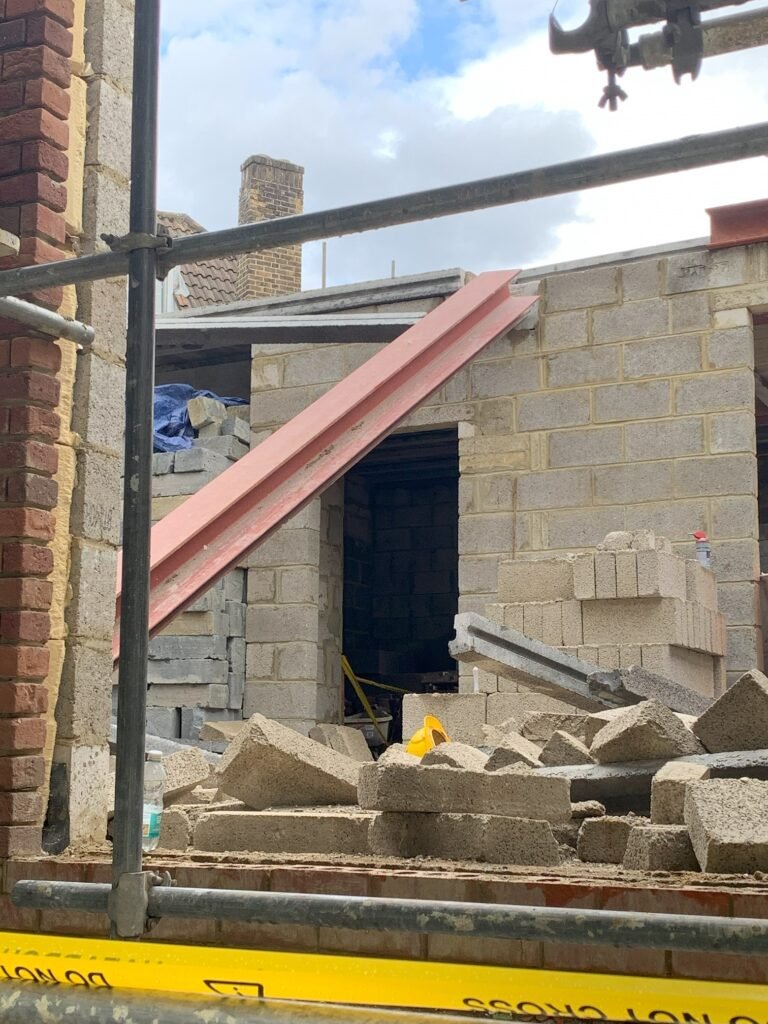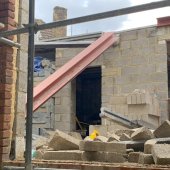Structural floor collapse during remedial works injures four

A construction firm has been fined £50,000 after a serious failure in temporary works planning led to the collapse of a first-floor structure at a site in Hampstead, leaving four workers injured.
Aryn Stones Ltd was contracted to deliver a new residential property in Hampstead, with construction beginning in March 2021. By early 2022, structural engineers identified incorrect connections in the structural steel beams, prompting remedial work on the partially completed beam-and-block first floor.
On 31 May 2022, two operatives – a 62-year-old welder and a 31-year-old bricklayer – were working on the first floor during a remedial procedure. The welder was cutting a steel beam using an oxyacetylene torch, while simultaneously, another worker was removing Acrow props supporting that beam.
Without sufficient support, the floor collapsed, sending the two workers to the ground and injuring two others who were working below. The welder and bricklayer sustained life-changing injuries.
The Health and Safety Executive (HSE) investigation found:
- no temporary works plan was in place for the remedial operation;
- the contractor failed to appoint a competent person to manage structural risk during the remedial phase;
- there was no documented method statement or risk assessment for sequencing or structural support during the cutting operation; and
- the structure was in a known temporary state of weakness, yet no measures were implemented to ensure stability or prevent danger to personnel.
Aryn Stones Ltd was found guilty of breaching Regulation 19(1) of the CDM Regulations 2015, which requires that structures are not put at risk of collapse during construction work.
At the City of London Magistrates’ Court last month, the firm was fined £50,000 and ordered to pay £39,000 in prosecution costs.
Learning points for building engineers
1. Temporary works management is critical
Temporary conditions can introduce unexpected structural behaviours, especially during remedial operations. A Temporary Works Coordinator (TWC) should be appointed to assess risk, develop plans, and oversee implementation.
2. Never work without proper sequencing
Critical tasks such as beam cutting or prop removal must follow a carefully designed sequence, informed by structural calculations and site conditions. These tasks must never be carried out simultaneously unless designed for it.
3. Control measures must match the risk
When remedial work impacts structural integrity, appropriate measures should include:
- Detailed method statements
- Monitoring procedures
- Physical restraints or propping
- Clear briefing of all workers involved
4. CDM 2015 responsibilities extend to all parties
Principal designers, contractors, and site managers must collaboratively ensure that changes to structural elements are safely executed, with responsibilities clearly defined.








